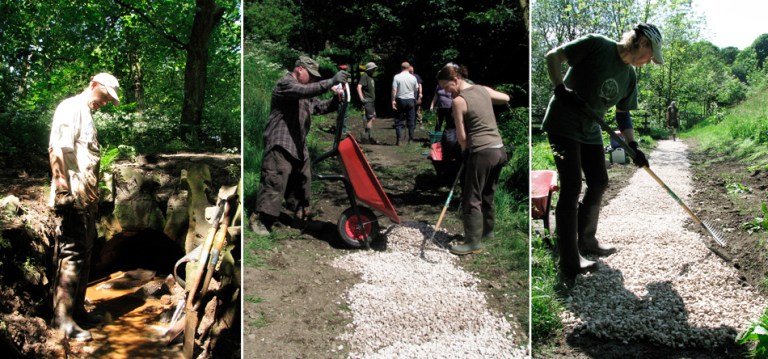Ornamental Pond Sunday 10th July 2022
The Barlow Institute was opened in 1909, in Edgworth, for the health and well being of the local community. It was dedicated to the memory of James and Alice Barlow by their children, one of whom was Sir Thomas Barlow, Professor of Clinical Medicine at University College London and the Royal Physician to Queen Victoria, Edward VII, and George V. In 2009 we held one of our residential weekends on the site and over 48 hours cleared blocked drains, cleaned out silted up ponds and installed new drainage near the river. Although the site had huge potential for wildlife we didn’t get to go back to do any further work. Since then The Barlow Institute has been re-branded as The Barlow and they have plans to develop and improve the site. The original 10 acre plot contained an open air swimming pool and a boating lake. In 2021 we returned began work on a new pond on the site of the old boating lake (which is doing really well now), worked on the hedges and dug silt out of the ornamental pond.

Today’s task, as we chose to accept it, was the impossible mission of digging out silt from the Ornamental Pond. The design of the pond makes it a perfect silt trap which is great for water quality further downstream but detracts from its function as a pond long term. As we like ponds to behave like ponds and provide habitat for all manner of beasties we’re having another do at digging it out, and again we chose one of the hottest days of the year to do it on.
The pond has a concrete liner which is a good 2 feet, or 600mm for those who don’t have feet, below the level of the out flow. This means that there was that much silt to dig out and as we don’t have a mechanical digger we had to use volunteer diggers to do the digging. With spades, shovels, buckets and barrows BCV and Barlow volunteers spent the day sweating it out over silt, resulting in more alliteration than you can shake a stick at. The job was tiring and back breaking but by the very welcome end of the day we had dug out half of what nature had deposited there over many years. But still plenty left.
Well done to the diggers, barrowers, bucket passers, mud dumpers and shovel scrapers for giving it all your muddin’.
And happy birthday James.
Don’t forget to check the Wild things page to see the new photos.





























































